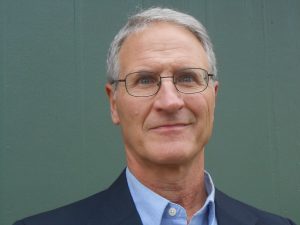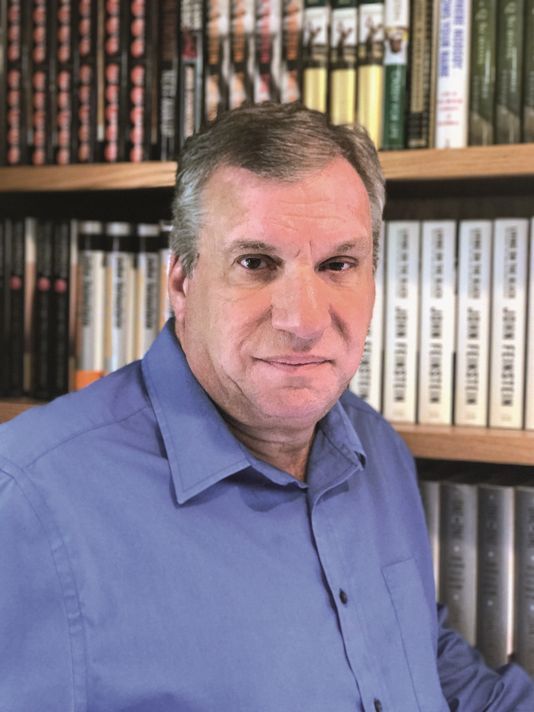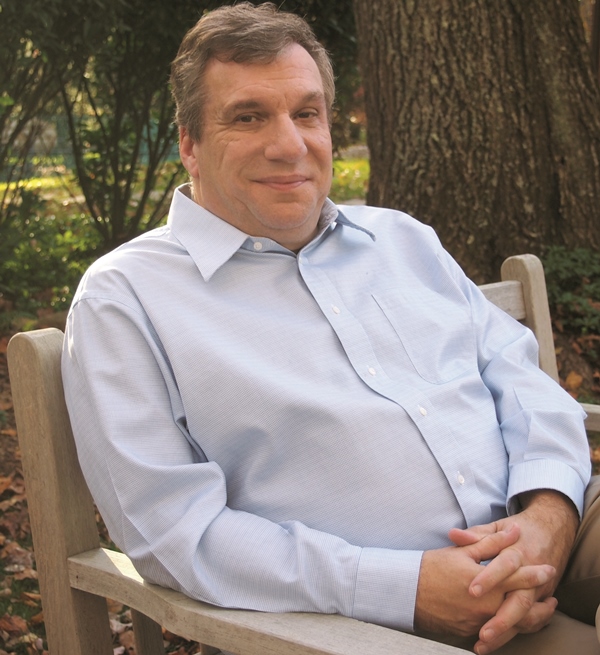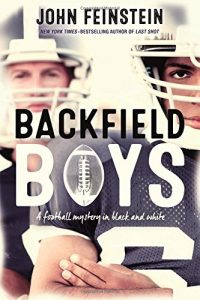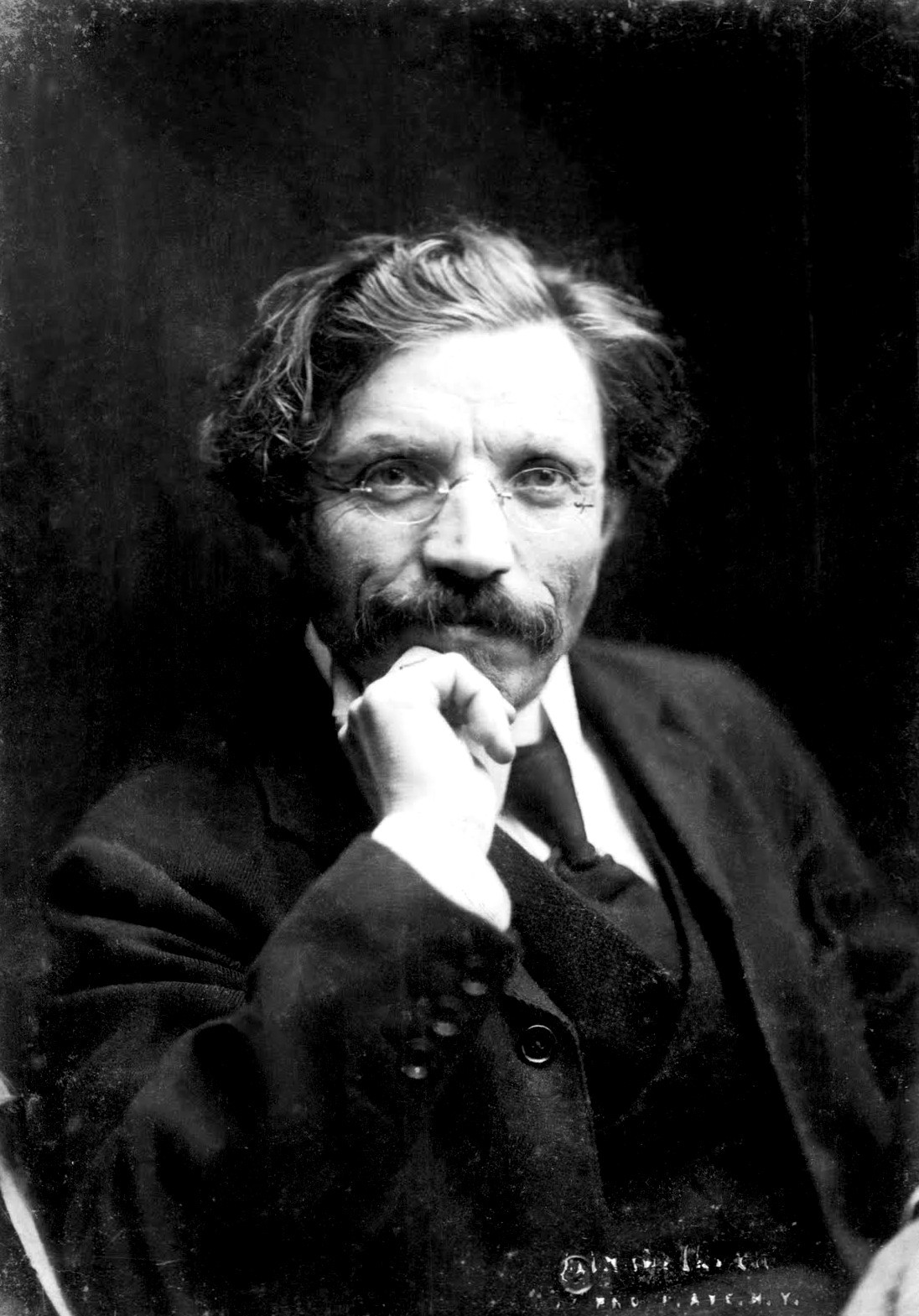
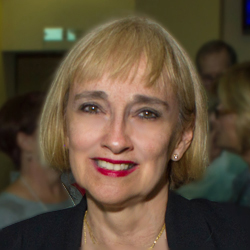
By Sandi Page, Member, FAU LLI Jupiter Marketing Committee member
Homer famously said in The Odyssey, “Wine can of their wits the wise beguile, make the sage frolic, and the serious smile.” The same can be said of our 68-page LLI Jupiter Spring/Summer 2018 Course Catalog which has just been mailed to you! Embark on your own odyssey as you browse through it and then read the course and lecture anecdotes/descriptions below that several of our instructors have written just for you. You will find some of your old favorites and a number of new offerings, all ready to beguile and enchant you.
Some Spring/Summer 2018 Courses
Dr. Kurt F. Stone, D.D.
“Triple Threat” Cinema: Films Written & Directed by Their Stars
Mondays, March 19, 26, April 2, 9, 16, 23, 2018; 7 – 9 p.m. (Full 6 weeks or First 4 weeks option)
The Best Ten Dollars Jack Warner Ever Spent
For decades, the Hollywood “law of the land” was that (with the sole exception of Charlie Chaplin), screen writers wrote, directors directed and stars acted. Period. That began changing in early 1940 when the already celebrated screenwriter John Huston decided that he wanted to direct his next screenplay. Approaching his boss, Jack Warner, the producer extraordinaire said precisely 2 words: “NO WAY!” Taking a page from his colleague, screenwriter Preston Sturges, who had just directed his own screenplay – The Great McGinty – Huston made Warner the following offer: “I’ll sell you the screenplay for a measly ten bucks if you let me direct.” “And what if I give you a small filming budget?” Warner asked. “I’d do it for nothing!” the 34-year-old Huston enthusiastically replied. “Don’t tempt me,” Warner chuckled. “What picture do you want to do?” he asked. “I really want to do the third – and very best – version of Dashiell Hammett’s The Maltese Falcon.
Giving the matter a bit of thought, Warner said “OK, what do I have to lose? Go ahead . . . but remember, if it’s a flop, you’re gonna be looking for a new job . . . fershtay?” Overjoyed, Huston signed the cheapest contract of his career, and proceeded to film Hammett’s classic crime drama in a scant 8 weeks . . . earning an Academy Award nomination for Best Screenplay for himself, and a reputation as a man who could do it all. And, of course, The Maltese Falcon became one of the greatest films of all time. Huston would go on to write, direct and frequently star in another 4 dozen major pictures over the next 47 years and, perhaps most importantly, opened the door for Hollywood’s second “Triple Threat”: the 25-year-old Orson Welles who, the very next year, would write, direct and star in perhaps the greatest motion picture of all time: Citizen Kane.
Indeed, it certainly was the best ten bucks Jack Warner ever spent . . .
Wesley Borucki, Ph.D.
Sports Culture in the South and South Florida
Tuesdays, March 20, 27, April 3, 10, 2018; 9:45 – 11:15 a.m.
There once was a kid in a northern suburb of Detroit who, in the early 1980s, dreamed of becoming a sportswriter for a major newspaper — sort of like the character of Ray Barone in “Everybody Loves Raymond.” But then, when completing an assigned research paper in high school on the career each student was considering, the kid discovered the starting salaries for journalists were really, really low. So, when he thought about his career plans and changed them shortly afterward, he logically chose a profession that was so incredibly remunerative: why, teaching, of course! Okay, even if it isn’t the highest-paying job in the world, that kid, now Wes Borucki, Ph.D., enjoys what he does immensely every day and wouldn’t do anything else, and he still gets to write about sports as a historian. Sports history has been a growing field for a couple of decades now, for changes in sports often illustrate wider changes in society. So, please join him as he shares his research with you on a variety of sports topics related to the South.
Taylor Hagood, Ph.D.
The Fireside Poets
Tuesdays, March 20, 27, April 3, 10, 17, 24, 2018; 12 – 1:30 p.m.
(Full 6 weeks or First 4 weeks option)
“Come, read to me some poem,
Some simple and heartfelt lay,
That shall soothe this restless feeling,
And banish the thoughts of day.”
Thus wrote Henry Wadsworth Longfellow in his poem “The Day is Done.” It is a perfect description of what a group of 19th century American poets were trying to accomplish: write poems that brought calm, quiet, and enjoyment. These poets, known as the “Fireside Poets,” were not the tormented-soul type poets who write edgy, politically-driven, obscure poetry that leaves you wondering if it is even poetry at all. Instead, these writers crafted musical poems that adhered to the rules of prosody and that pondered the common concerns of life, death, love, happiness, and sadness that all individuals experience. Mostly forgotten, these poets dominated the late 1800s literary scene in this country. My hope is to bring back some of their magic by telling about their lives and poetry.
Byron R. McCane, Ph.D.
More Than Once Upon a Time: Stories We Can’t Stop Telling
Wednesdays, April 18, 25, May 2, 9, 16, 23, 2018; 3 – 4:30 p.m.
(Full 6 weeks or First 4 weeks option)
From Adam and Eve to David and Goliath, stories from the Bible have a surprising influence in American culture. The highly-acclaimed film Mudbound, for example, is a riveting retelling of Adam and Eve’s banishment from the garden. And, if by chance you are thinking of running for public office, make sure your campaign evokes the Exodus narrative. It wins every time. In this course, we will explore five biblical tales which recur in television, film, politics, and media. In addition to the two stories mentioned above, we will also look at Cain and Abel, Abraham and Isaac, and David and Bathsheba.
Irving Labovitz, J.D.
OBJECTION! Current, Contentious and Confusing Legal Battles
Thursdays, March 22, 29, April 5, 12, 19, 26, 2018; 12 – 1:30 p.m.
(Full 6 weeks or First 4 weeks option)
LLI professors are often requested to laud the value of his/her class. I am not so bold. Rather, I submit that simply listing some of the varied topics discussed in depth last semester in our interactive classes may be somewhat more instructive, as follows:
The Emoluments Clause of the Constitution and its legal relevance to business machinations related to the President; impeachment or 25th Amendment removal of a sitting President; the 3 iterations of the travel ban issued by the Executive Branch; The Masterpiece Cake shop case recently heard by the Supreme Court; net neutrality; legal exposures of Mssrs. Manafort, Kushner, Trump Sr. and Jr.; the future of Michael Flynn and grants of immunity; and the power of the President to unilaterally start an armed conflict today.
What else could happen next semester?
Stephanie Flint, Ph.D. student in FAU’s Comparative Studies program
Classic Monsters and the Supernatural in Popular Media and Culture: Histories and Interpretations of Monsters from Antiquity to Today
Thursdays, March 22, 29, April 5, 12, 2018; 2:15 – 3:45 p.m.
Exactly 200 years ago this January, Mary Shelley published her wildly famous novel Frankenstein and changed the representation of monsters in popular culture forever. You don’t have to be a horror movie buff to know that monsters are everywhere. Whether you’re watching the next big horror flick or a children’s cartoon, monsters and the supernatural dominate American popular culture. But where do they come from? And why are they so ubiquitous? We will explore these questions alongside the history, theories, and representations of classic supernatural monsters in this four-week course. We will seek to answer deep questions like what constitutes monstrosity, alongside musings about how “Frankenstein” came to be the name of the monster (rather than its creator), and why it is that vampires sparkle now. We will focus our attention on classic Hollywood monsters (including Frankensteins, werewolves, zombies, and vampires), explore potential origins and meanings, all while tracing their representation in popular culture along the way. It’s sure to be a scream!
Terryl Lawrence, Ed.D.
A Potpourri of Summer Delights – Art for Everyone: Part I
Fridays, March 23, 30, April 6, 13, 20, 27, 2018; 12 – 1:30 p.m.
(Full 6 weeks or First 4 weeks option)
A Potpourri of Summer Delights – Join Me in Paris: Part II
Tuesdays, May 15, 22, 29, June 5, 12, 19, 2018; 1 – 2:30 p.m.
Spring and summer are metaphors for richly woven baskets ready to be filled with extravagant experiences and fragrant bouquets of exotica. It is the time when we leave the winter behind and fulfill our dreams with moments of pure pleasure and joy, a time when we can actualize our dreams of travel, study, and delightful experiences.
I have always embraced these seasons for the freedom allowed. Pressures of work slow, and the air engulfs us with welcome warmth and enthusiasm as a daily greeting. I can close my eyes and relive the late afternoon swims with my dad in the tepid Atlantic Ocean in Brooklyn or the aroma of the pine trees as I walked through the forests collecting pinecones that decorated the carpet around Lake George.
This is a time for rebirth, rejoicing, and reveling in living with all of its constant surprises.
It is a time to create new memories, and to embroider them into our mind’s tableau of remembrances.
The talks I am offering this spring and summer address a mélange of unique and inspirational moments in the History of Art. The artists and art that I have chosen to share with you are diverse and optimistic; and, I believe, will help to adorn your season with enjoyable personal encounters, fun, beauty, love, and adventure.
Benito Rakower, Ed.D.
Six Unusual Films
Fridays, March 23, 30, April 6, 13, 20, 27, 2018; 2 – 4:30 p.m.; Film Discussion: 4:30 – 5:00 p.m.
(Full 6 weeks or First 4 weeks option)
One Day – 2011 (British/American)
British films depicting “University” graduates (Oxford, Cambridge, and Edinburgh) share one quality. The young men and women speak English in an educated manner. If, on their graduation night, they continue to wear black cap and gown, while swilling Champagne by a fountain, they still look and sound educated.
In this unusual romantic comedy, two young people meet on their graduation night and spend an unexpectedly chaste night together. What neither of them recognizes is that their souls have meshed totally on the deepest level.
The boy is upper-class and charming, but somewhat irresponsible. The girl is middle-class, determined, highly intelligent, and driven by sustained self-confidence.
The film records the subsequent trajectories of their lives on the same yearly date, June 15. Occasionally, their paths intersect, but they marry other people. Eventually, the force of destiny exposed on their first night together cannot be resisted. They are married. And then, Fate strikes with senseless tragedy. That is not the end of the story.
Few films have ever gone this far in portraying the magic of romantic attraction in collision with the unforgiving contingencies of life.
Katie Muldoon
Bending Fate: International Films with Tales of How Ordinary People Try to Control Their Destiny
Wednesdays, July 11, 18, 25, August 1, 8, 15, 2018; 1 – 3:30 p.m. (1 – 4 p.m. on July 25);
Film discussion: 3:30 – 4:00 p.m.
Award-Winning International Films That Sparkle With Intelligence and Humanity
Sometimes you are lucky enough to stumble upon a film or two that sparkles with intelligence.
I was lucky enough to unearth six and am now even more fortunate as I have the opportunity to share these gems with those of you who join me for my summer class. What makes these films unique is the richness of feeling and emotions that surface as each character in each situation approaches the particular challenge in their story. Yes, every character and every film will face a challenge of a sort, but their stories aren’t harsh or depressing. On the contrary, we are reassured of the goodness of humans, their honesty, honor, morality and their delightful humor.
We’ll understand: the deepest desire of a youthful Italian beekeeper, what real honor is for an Estonian farmer, how miracles might happen for a middle-aged Welsh barmaid, the impossible choice of a Talmud scholar, and how differently a French middle-aged professor and a set of Hong Kong youngsters positively deal with different forms of loss. Prior to each class, background will be provided. After each film, we will discuss what we have seen.
Benito Rakower, Ed.D.
Tuscany and Provence: The Reinvention of Cinema
Thursdays, May 17, 24, 31, June 7, 14, 21, 2018; 1 – 3:30 p.m., Film Discussion: 3:30 – 4:00 p.m.
The two-part Jean de Florette and Manon of the Spring are recognized to be the summit of French film making and a national treasure. Though the first part, Jean de Florette, can be shown alone, the greatness of the story requires the revelations supplied by Manon of the Spring. This summer film course provides an opportunity to view both parts sequentially. We are all familiar with the concept of “Greek Tragedy.” But its tremendous and devastating force can only be conveyed fully in art. No other films have ever caught the slow and relentless horror of tragic irony with the magnificence of these two films.
The legendary beauty of Provence and the stolid nature of its inhabitants provide the setting. Yves Montand gives a towering performance depicting a great character caught in the web of a flaw – rustic cleverness. The film compels us to reflect on what in this world cannot be forgiven and how guile, deception, and cunning have an outcome the exact opposite of what we desire.
Some Spring 2018 Lectures
Bert Diament, Ph.D.
Is it a Quirk or a Personality Disorder?
Tuesday, March 20, 2018; 7 – 8:30 p.m.
We are constantly assessing other people and often form over-generalized impressions about them. We do this automatically and assign them to various categories. If someone behaves in a way that does not conform to our expectations of how people should behave, we are quick to make an attribution as to why this person behaves that way. Some of us are arm-chair psychologists, and may even diagnose that person with some psychological label. For example, if our spouses do not conform to our expectations of “neatness,” if we are angry at them for this and other reasons, we may accuse them of being “passive-aggressive” or having “attention deficit disorder.” The same lack of neatness, if we have a more accepting relationship, is labeled as “forgetful,” a much more charitable attribute.
Whether you view another person’s behavior as “a minor quirk,” “unusual,” “unique,” “bizarre,” “crazy,” “off the charts,” or indicative of emotional problems, is probably more a reflection of your idiosyncrasies, and how much you like and appreciate this person, than this person’s objective “real” essence. People who are more accepting and less governed by narrow “shoulds” tend to be less judgmental and more charitable in their assessment of others.
Gary Wiren, Ph.D.
Golf: From the Roman Legions to Arnold’s Army – The Greatest Game
Monday, April 23, 2018; 12 – 1:30 p.m.
The title of “A Royal and Ancient Game” given to golf is quite accurate and will be shown to be so during my April lecture. What will be presented are examples first of golf-like games like Chui Wan that developed during the Song dynasty in China, 960-1279. Other stick and ball games from this example appeared later in Belgium, Italy, France, South America, Holland, and the U.K. with names like Kolf, Chole, Pall Mall, and others. We will take a look at the first Country Club in the Americas in Montreal, Canada and the early appearance of golf in South Carolina as well as meet “The Father of American Golf.” We’ll see early equipment used in these games and follow its evolution up to what we use today. You will hear stories that may surprise and amuse you as well as tragic tales of some short-lived champions.
Learn of our golfing American Presidents, who was, who wasn’t, and how they played. Hear of the reasons why the game is, for some, so compelling but, for others, is not. Even if you thought you knew a lot about the game of golf beforehand, you will leave knowing much more. It will be Educational, Motivational, and Enjoyable.
James B. Bruce, Ph.D.
Secrecy and Transparency in Government
Monday, March 19, 2018; 2:15 – 3:45 p.m.
Government secrets—what do they hide? And why? Are there too many of them? Do we really need all that secrecy?
The new movie, The Post, celebrates the Top-Secret leak of the “Pentagon Papers.” Edward Snowden’s and Private Manning’s massive internet leaks caused a furor, along with policy changes to better protect individual privacy.
Yet U.S. intelligence failed to warn against al-Qaida’s terrorist attacks on September 11th partly because press leaks gave away a secret collection capability to intercept Osama bin Laden’s telephone calls. Intelligence against other threats like North Korean nuclear missiles has been weakened by public disclosures in the media.
Many allies and foreign partners are reluctant to share intelligence with the United States because they increasingly think the U.S. government cannot keep the sensitive secrets they give us. Many American businesses feel the same way. Previous intelligence partnerships with the private sector as well as with foreign governments are frayed or broken because these vital sources no longer trust the government to protect their discreet assistance.
Transparency and secrecy in conflict? This lecture explores these daunting questions and seeks answers to a significant 21st century issue in U.S. national security.
Robert P. Watson, Ph.D.
Incivility and Dysfunction in American Politics
Thursday, March 29, 2018; 7:00 – 8:30 p.m.
You don’t have to be a political scientist to realize that our politics have taken a turn for the worse in terms of widespread dysfunction seemingly at all levels of government and the collapse of civility and common decency and decorum. It is difficult to even have a discussion about politics today, much less one that is civil and based in fact. I believe that this dilemma constitutes the most pressing threat to our political system today. As such, I plan to assess the root causes of these issues, examine the disturbingly long history of dysfunction and incivility for clues as to how we got to this point, and explore the consequences to our political system of these problems. That said, I also plan to do so with a dose of humor and a commitment to civility!
The Honorable Molly Williamson
Global Energy, Environment and Economy: Policy Nightmares
Tuesday, April 17, 2018; 9:45 – 11:15 a.m.
Aaaargh: no energy crisis anymore? But wait, a fossil fuel crisis: we have so much, we have an environmental crisis? But wait, abundant traditional energy is making alternative and renewable sources MORE expensive? But wait, the global economic recovery is fragile at best, and there is growing concern about income and wealth disparities? How do policy makers navigate these murky political waters? But wait, there’s more: nobody agrees on the problem(s) or how to fix them. No, no, wait, there’s more: The international community doesn’t agree, no, it DOES agree, under U.S. leadership. No, no, wait, the U.S. just walked away. No, wait……
Ronald Feinman, Ph.D.
Six American Presidents and the Civil War Crisis
Thursday, April 19, 2018; 9:45 – 11:15 a.m.
When the Civil War began in 1861, for the first time, we had six living Presidents – Abraham Lincoln and five former Presidents of the United States, an event which would not occur again until 1993.
Two of the former Presidents died in the second year of the Civil War (1862), with John Tyler having sworn his loyalty to the Confederate States of America, rather than the United States; and Martin Van Buren, the oldest former President taking the opposite view, strongly supportive of the Union, after having been the Presidential nominee of the Free Soil Party of 1848.
Millard Fillmore denounced secession of the South, and agreed that the Union must be maintained by force, if necessary, but was critical of the war policies of Abraham Lincoln.
Franklin Pierce was a strong critic of the Lincoln policies in the Civil War, had tried to prevent the outbreak of war, and saw the war as cruel, heartless, and unnecessary, and, thus, was seen as a Southern sympathizer, causing public opposition to him during the war.
James Buchanan, the President immediately before Lincoln, was blamed for taking no action against secession, and was under constant criticism for the outbreak of the war, but he supported the U.S. government during the war, and saw the attack at Fort Sumter as justification for military action against the South.
Tom Poulson, Ph.D.
Wine and Wisdom: “Restoring” Florida’s Everglades
Thursday, April 19, 2018; 4:00 – 5:30 p.m.
The video of These Glades are Your Glades that I helped produce is overly optimistic about the future of our Everglades. There is still controversy about the Restoration Mantra of how to get the water right with Quantity, Quality, Distribution, and Timing (Q, Q, D, T). Too few pay attention to the wise old owl who sat in an oak, the more he saw the less he spoke, the less he spoke, the more he heard.
For Q, Q, D, and T, there is misinformation, misunderstanding, and misconception. Where is the Everglades? What causes harmful algal blooms? What causes seagrass die-off in fishing meccas? What causes cattail monocultures with little biodiversity?
We cannot revitalize our Everglades with the prevalence of unscientific Americans. I blame educators, scientists, government agencies, economists, politicians, businesses, and the media. There are goats and saints among individuals and organizations.
We need to listen to Pogo who observed, “We have met the enemy and he is us.” We must think globally and act locally, individually, and collectively. When we demonstrate, advocate, and educate, let’s talk about poisons, diseases, slime, and shit. When legislation fails, let’s litigate: Sue the bastards! And be passionate: I’m bustin’ my ass to save the river of grass!
Barbara A. Falletta, Ed.D.
The Art of Ornament : Jewelry as a Record of History
Tuesday, April 24, 2018; 9:45 – 11:15 a.m.
There’s a lot of truth to the statement: You are what you wear!
Throughout history, jewelry has revealed a vast amount of information about the people who wore it, their status in society, the culture and time period in which they lived, their values, and even their personal lives. From the Crown Jewels of England to a simple locket worn as a remembrance of a loved one, jewelry tells a story. This presentation will reveal two fascinating stories where jewelry has served a most valuable historical function in our world.
Christopher Strain, Ph.D.
Understanding the Debate over Confederate Monuments
Thursday, April 26, 2018; 9:45 – 11:15 a.m.
Protests, rallies, showdowns, vandalism, midnight topplings… Why all the fuss over Confederate monuments and memorials? Across the South in the late nineteenth and twentieth centuries, statues of Confederate heroes and soldiers were erected in public squares and on courthouse lawns; there are seven hundred between Tampa, Florida and Charlottesville, Virginia. In Atlanta, likenesses of General Robert E. Lee, General Stonewall Jackson, and President Jefferson Davis were carved into the face of Stone Mountain, a kind of Confederate Mt. Rushmore. In recent months, these monuments have elicited demonstrations and counter-demonstrations—but why? And why now? What is the history of these monuments and why do they generate controversy today? We’ll delve into the past and present of the American South’s equestrian elegies in an attempt to understand the debate.
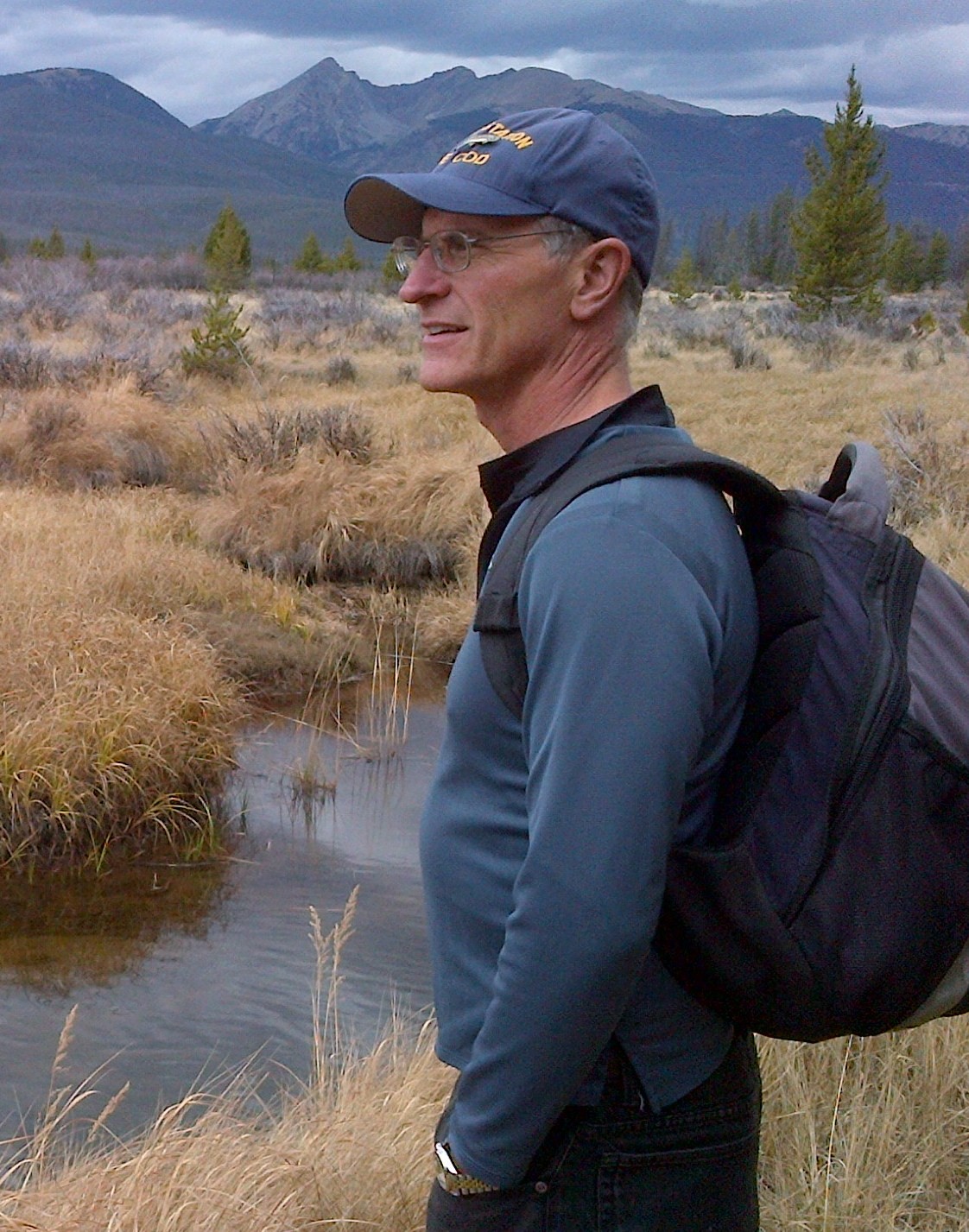
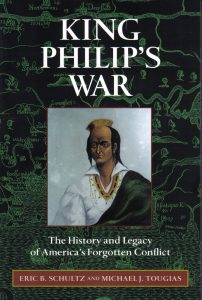 Michael Tougias, who was “King Philip” and where did this little-referenced war take place?
Michael Tougias, who was “King Philip” and where did this little-referenced war take place?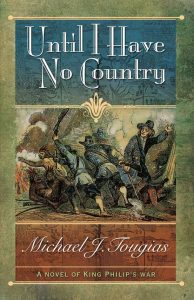 How did you become interested in the subject and why did you write not one, but two, books on it?
How did you become interested in the subject and why did you write not one, but two, books on it?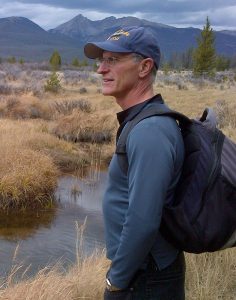 As you mentioned earlier, you also wrote a book humorously titled There’s a Porcupine in My Outhouse: Misadventures of a Mountain Man. Could you share with us how that book came about?
As you mentioned earlier, you also wrote a book humorously titled There’s a Porcupine in My Outhouse: Misadventures of a Mountain Man. Could you share with us how that book came about?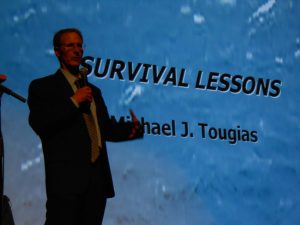 What is your next writing project?
What is your next writing project?


